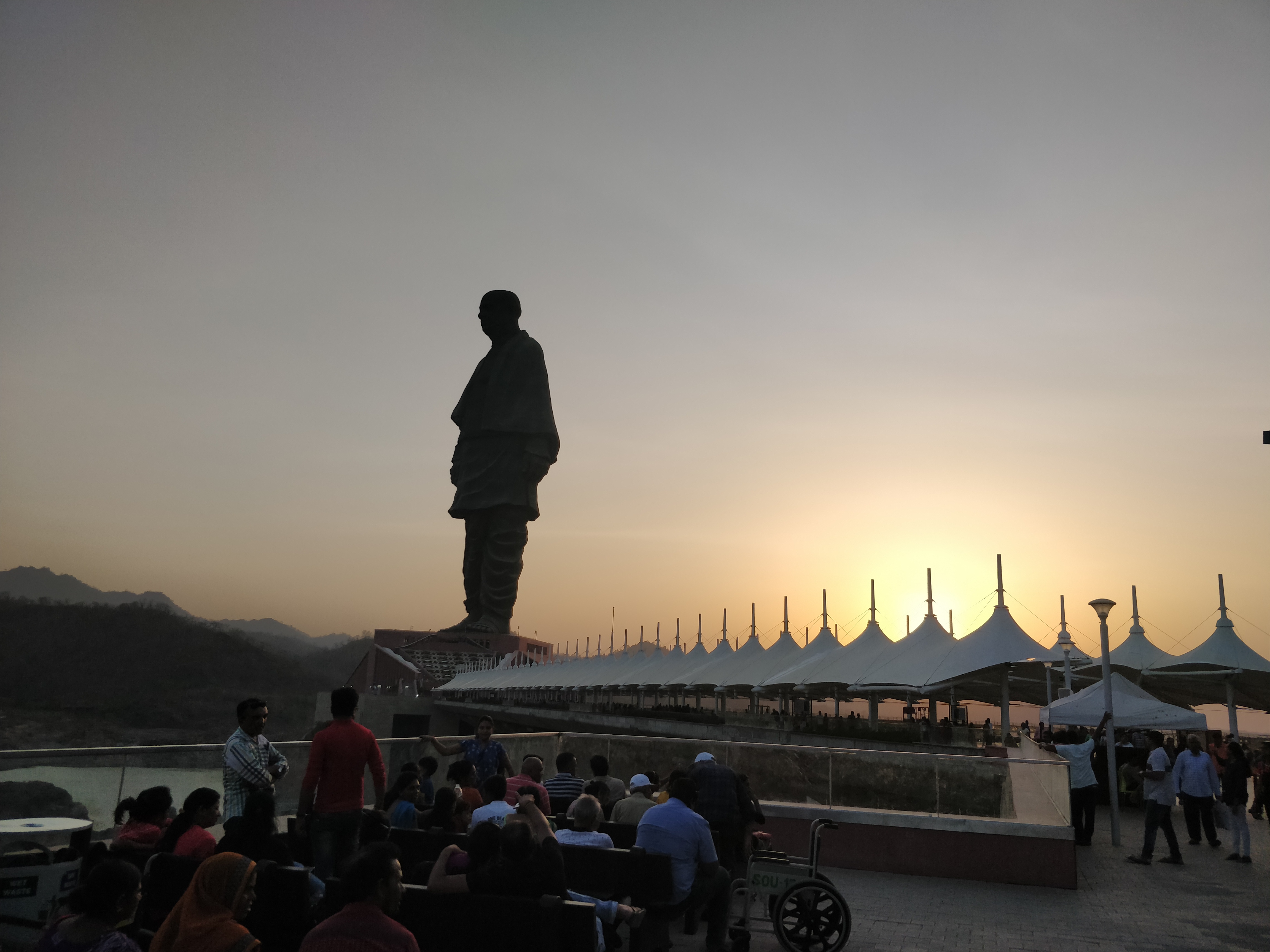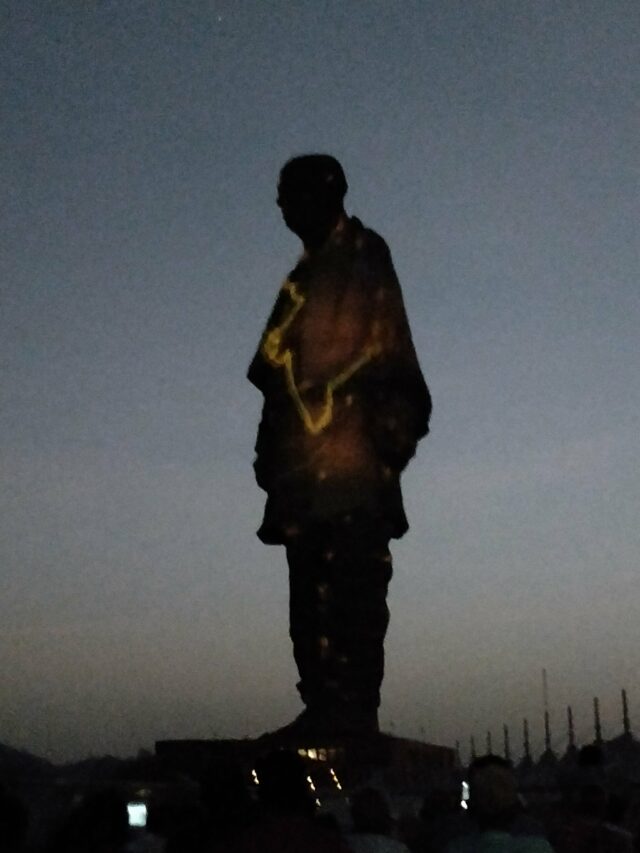Value Learnings can be appreciated by seeing the difference they have made in the life of great people. A visit to the Statue of Unity(SOU) helps to reinforce value learning.
In the first week of June 2019, we visited the Statue of Unity, which is the tallest statue in the world. We met the project team who have actually worked on the project. It was very inspiring to learn about the project vision, implementation, challenges, and the possible impact that it will have on the development of the region. The vision behind building the tallest statue in the world is to commemorate the Iron Man, Sardar Vallabhbhai Patel, and to inspire us to inculcate the ideals and values of Sardar Patel.
Why did we experience feelings of joy and inspiration on our visit to the Statue of Unity? Maybe, there was a feeling of some connection with the monument. We made an attempt to understand why we made a quick connection to the monument.
It is the qualities/values that the monument represents which are close to our hearts. Through the values, we connect to a lifeless object. This connects us to a higher vision that this leader worked for and a similar possibility in our own lives. It’s our attempt to share some of these learnings from the visit. We like people with similar interests. We easily gel with people who have a similar value system.
If you connect with the monument, you can reflect and try to understand what values of this great Sardar of India you connect with.
Statue of Unity (SoU) -Value Learnings
Ideologies and Value Learnings at SOU
What are “Ideologies/Values” that we have learned from our visit?
Quick Review of Values
Nation Above Self – Value #1
If you read about the lives of great men, leaders, and patriots, you will notice some common traits. What is their attitude towards their Nation? It is Always Nation Above Self?
Who is a patriot? Is it only that the great leaders of India or the soldiers are patriots? Each one of us can be a patriot in our own special way, by always keeping the nation in mind and doing our bit. It may be as little as planting a tree to help keep the surroundings clean. By always thinking and acting based on what is best for the nation, we can keep the Nation above ourselves.
It is the prime responsibility of every citizen to feel that his country is free and to defend its freedom is his duty. Every Indian should now forget that he is a Rajput, a Sikh or a Jat. He must remember that he is an Indian, and he has every right in his country, but with certain duties.
Sardar Vallabhbhai Patel
If we become aware of our own tendencies and start observing why we do what we do, we will realize that the universe is centered around us. If I become aware of this self-centeredness and have the desire to bring about a change in myself. Once I have this kind of desire, I can start including the welfare of others in my conscious thinking. As we make this effort, we grow the value of selflessness. Patriotism, Nation above self are examples of this value of selflessness.
Unity in Diversity -Value #2
Sardar Patel depicted this value in its true flavor. He was the key player in the formation of an Integrated and Unified India post-independence. Sardar Patel visited each of the princely states and convinced them to join the Republic of India sometimes with compassion and understanding, sometimes offering them something in return, and sometimes with force. He is also called the “Iron Man” of India because of his gentle yet firm attitude. This helped him in bringing together the 562 princely states of India.
Manpower without unity is not a strength. When it is in harmony and united properly, then it becomes a spiritual power.
Sardar Vallabhbhai Patel
Satyagraha – Value #3
Satyagraha is a non-violent means to resist the authority of the state to achieve the general welfare of the people. Sardar Patel participated in many non-violent campaigns. Some of them are:
– Sardar Patel organized farmers from Kheda, Borsad, and Bardoli districts in Gujarat in non-violent civil disobedience against the British Rulers in 1928.
– In 1930, Sardar Vallabhbhai Patel went to prison for his participation in salt satyagraha led by Mahatma Gandhi.
– When he was in sixth grade, he organized a successful strike with the support of his classmates. It lasted for three days to teach a lesson to one of the teachers who was unduly fond of the rod.
People in current times tend to resort to anger and violence. We have to teach the angry to love again. Instead, of sharing anger, what if can teach them to love? Hate leads to violence/terrorism which serves vested interests. We have to start thinking of the whole nation, instead of thinking only about ourselves. Frustration and anger need to be channelized into a public movement. With the support of media, public opinion, and public pressure, a change can be brought about.
A war based on Satyagraha is always of two kinds. One is the war we wage against injustice, and the other we fight our own weaknesses.
Sardar Vallabhbhai Patel
Internal Satyagraha – Silent Transformation
We see disruptions happening on the economic front. We are witnessing an era of rapid change in technology. The fabric of social engagement is transforming rapidly. The phenomenal rate of change is testing times for the entire world. The old orders are crumbling and this upheaval in the material and emotional dimensions cannot be tackled by name-calling, yelling, and assigning blames.
We need silence, introspection, and peaceful disobedience of our existing habit patterns. There is a need to plant new empowering thought patterns that can take root. The struggle begins with each individual who understands that these modern times are a blessing of sorts with material needs easier to fulfill post-independence and an opportunity to discover and unleash one’s true potential in a free India.
Limited thinking will keep us seeking freedom externally. We have been free of foreign rule for more than 7 decades. India is the largest democracy in the world. Seeds of empowering change need to be sown internally and its roots have to be nourished by each individual. Only then the freedom from this mental limitedness is possible.
Courage -Value #4
Each one of us needs to step out of our comfort zones to work toward the betterment of the nation. We need the courage to stand up against the “wrongs” that we come across. This courage or “active resistance to evil”, means that we do not turn a blind eye to the injustice happening around us.
Firstly, you need to learn to own your mistakes. For example, if you jump a signal, you know it’s your fault. You pay the fine instead of bribing the cop.
Secondly, we also need to understand that turning a blind eye to evil is an indication of passive participation in evil. We should muster up the courage and make an effort to help the people in need to fight the evil in society. Sardar Patel was imprisoned several times during the freedom struggle. The hardships did not deter the courage of the Sardar.
Determination -Value #5
Sardar Patel’s family had limited resources so he used to help the family with farming as a child. Sardar Patel was determined to get educated and was mainly self-taught. He completed his matriculation when he was 22 years old. He further went on to do his degree in law and became a practicing lawyer before joining the freedom struggle. You hear people committing suicide, becoming depressed at the first sign of failure. This is the case especially for children these days.
Persistence -Value #6
Persistence is the continuation of action around that purpose. Sardar Patel continued fighting against the British for 3 years for the rights of the farmers in Gujarat during the Bardoli Satyagraha before the British gave any respite to the farmers.
Rani Laxmibai and many others were early torchbearers of the freedom struggle of India way back in 1857. We got our independence in 1947. Several freedom fighters persevered all through their lives for India to become free. For any great endeavor to be successful, both determination and persistence are needed.
Inclusive Growth -Value #7
“I succeed if you succeed”. Came across an interesting incident recently. A person at the food stall tells the owner that with the snack you should offer tea too. The owner replied if I do that then what will the tea stall vendor next to my stall do? This is inclusive growth.
Sardar happened to be the first to pitch for removing “sexual disqualification” in the district municipal Act, Section 15(1)(C). As per this Act, women were barred from contesting elections. Sardar Patel argued that keeping women out of the elected body was equivalent to eliminating the representation of half of the urban population. In 1926, Section 15(1)(c) was abolished.
We have to shed mutual bickering, shed the difference of being high or low, develop a sense of equality and banish untouchability. Restore the conditions of Swaraj prevalent prior to British rule. We have to live like children of the same father.
Sardar Vallabhbhai Patel
Values of Love, Compassion, and Oneness are the foundation for inclusive growth.
Foresightedness -Value #8
Sardar Patel had already started working on a unified India two years before India got its independence. Similarly, the statute of unity has a vision not only to instill the value of unity in the countrymen but uplift the development of the entire region making a tourism hub and generating employment opportunities in the region. The capital invested is estimated to be recovered through multiple revenue streams in around 10 years.
Each one of us needs to think about our collective and personal goals. When our goals are interconnected, the synergy will reap a harvest of collective as well as personal freedom.
One should invest in developing a personal empowering vision to feel free and be really happy.
Commitment -Value #9
Few incidents to show Sardar Patel’s level of commitment:
-Sardar Patel led the salt satyagraha after Gandhiji was imprisoned. He also had to go to jail for his participation.
-In 1946 elections for Congress party president were underway and it was clear that the chosen president would go on to become the prime minister of India post-independence. 12 out of 15 Congress committees nominated Sardar Vallabhbhai Patel. Sardar Patel had immense respect for Gandhiji and he withdrew his candidature at Gandhiji’s request.
He was committed to the nation and not to the post.
Strategy -Value #10
Sardar Patel was instrumental in the founding of the Indian Administrative Service and the Indian Police Service. He reorganized our Services which had become depleted with the departure of the British and formed a new Indian Administrative Service, to provide a stable administrative base to our new democracy. Sardar Patel is also remembered as the “patron saint” of India’s services.
-He sorted out the problems of partition, restored law, and order, and dealt with the rehabilitation of thousands of refugees with great courage and foresight.
-He used varied strategies in bringing the princely states together as part of a unified India.
Summary
Vision and Strategy need to be supported with determination, perseverance, and courage to achieve what has been envisioned. If we can be less selfish we can think of inclusive growth, nation above self, and work as a united team in the diverse teams that are commonplace in current times.
Finally with resolve or personal commitment and internal satyagraha to transform our thinking, alone can we shape our destiny.
“Unity in Diversity” is the pride and Soul of the Nation.
Wall of Unity
This wall of rammed earth is a representation of the same, made by the citizen of the nation across the country. It is an expression in the form of the earth element. It is one of the key elements of nature and that is a part of every human life. This earth used was collected from all over the country. The wall expresses individuality as the dust of shape, color, size, aroma, and texture, standing together as a wall of purpose, UNITED.

Projection-Mapping Glimpses from SOU
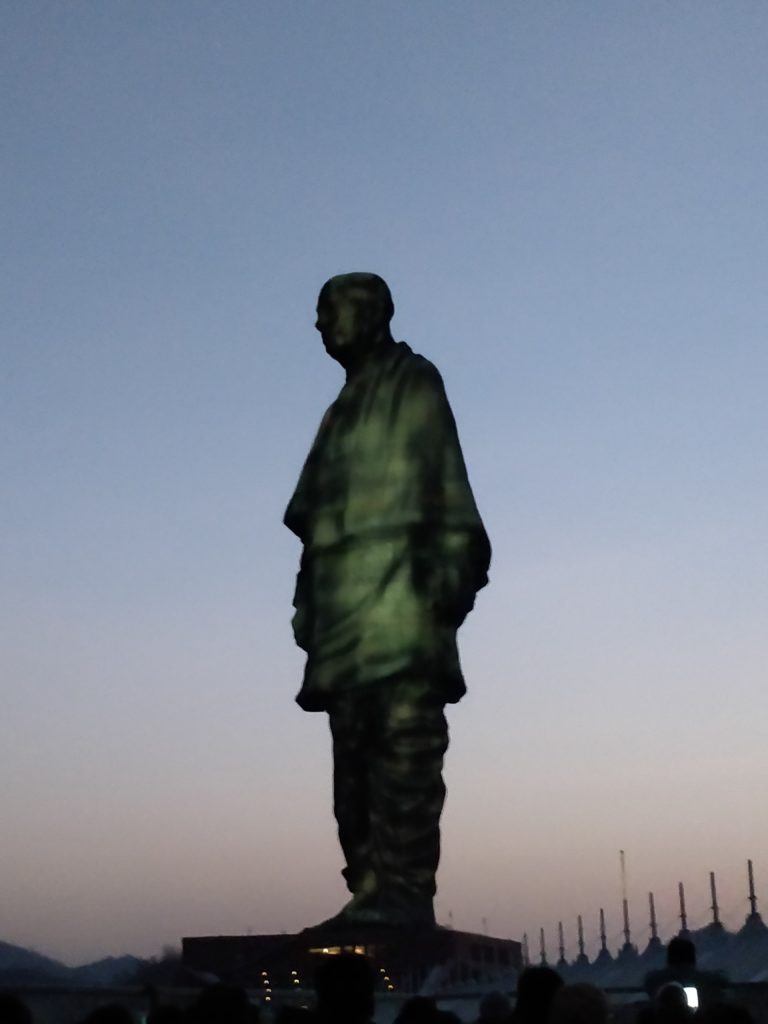
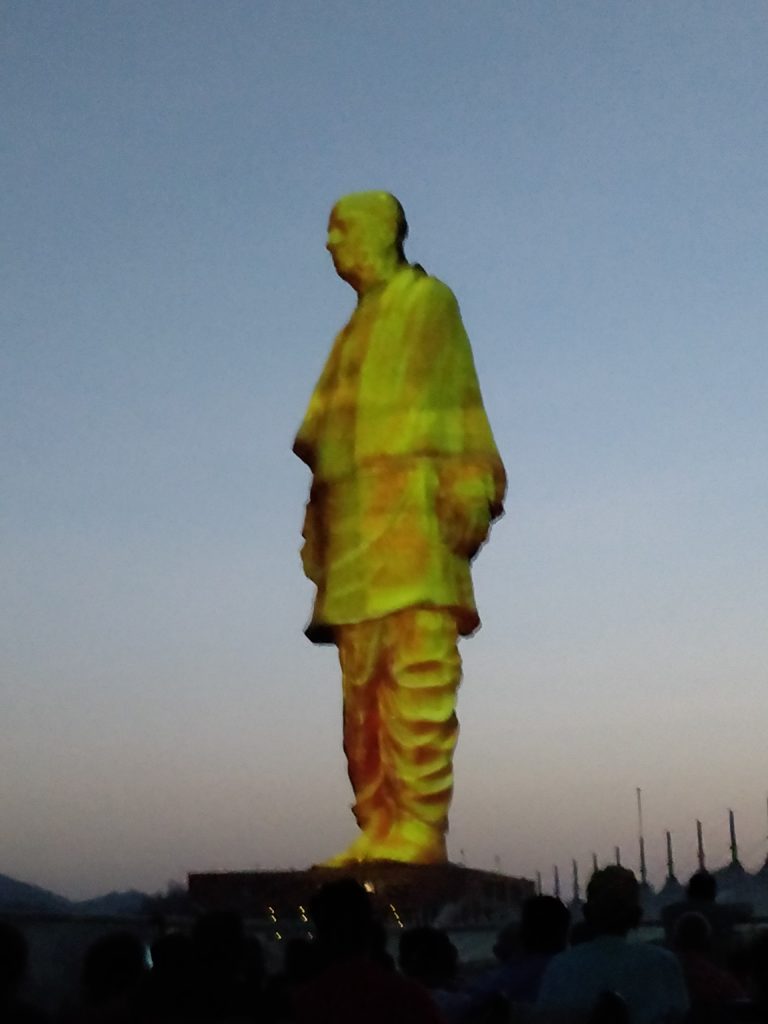
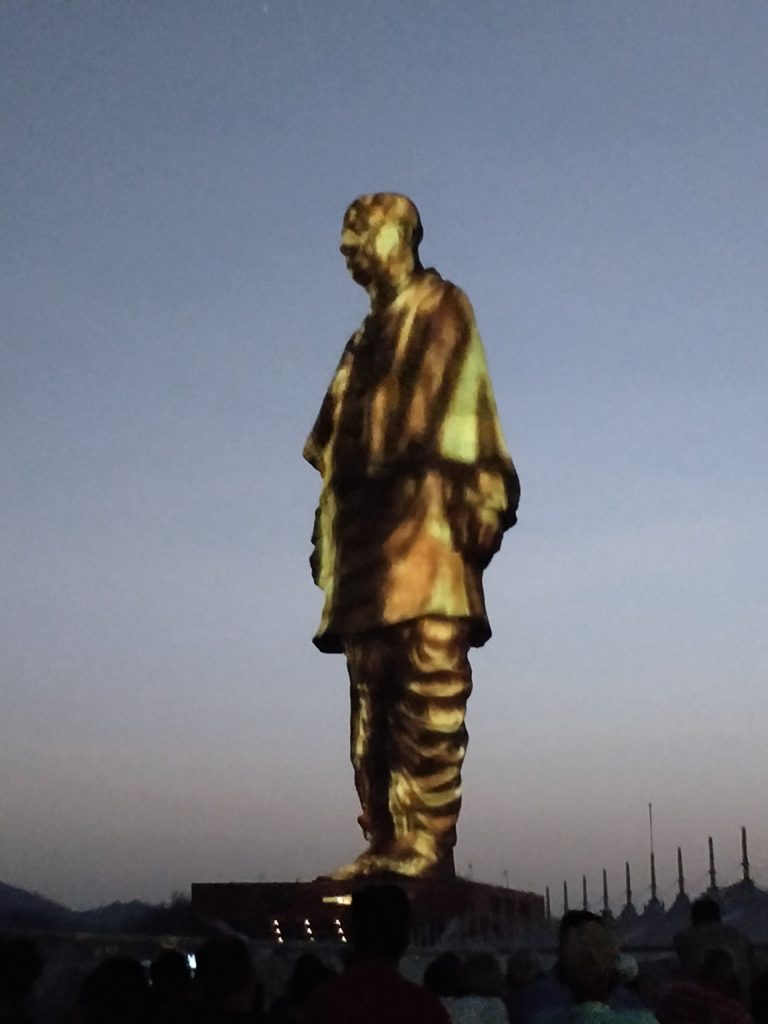



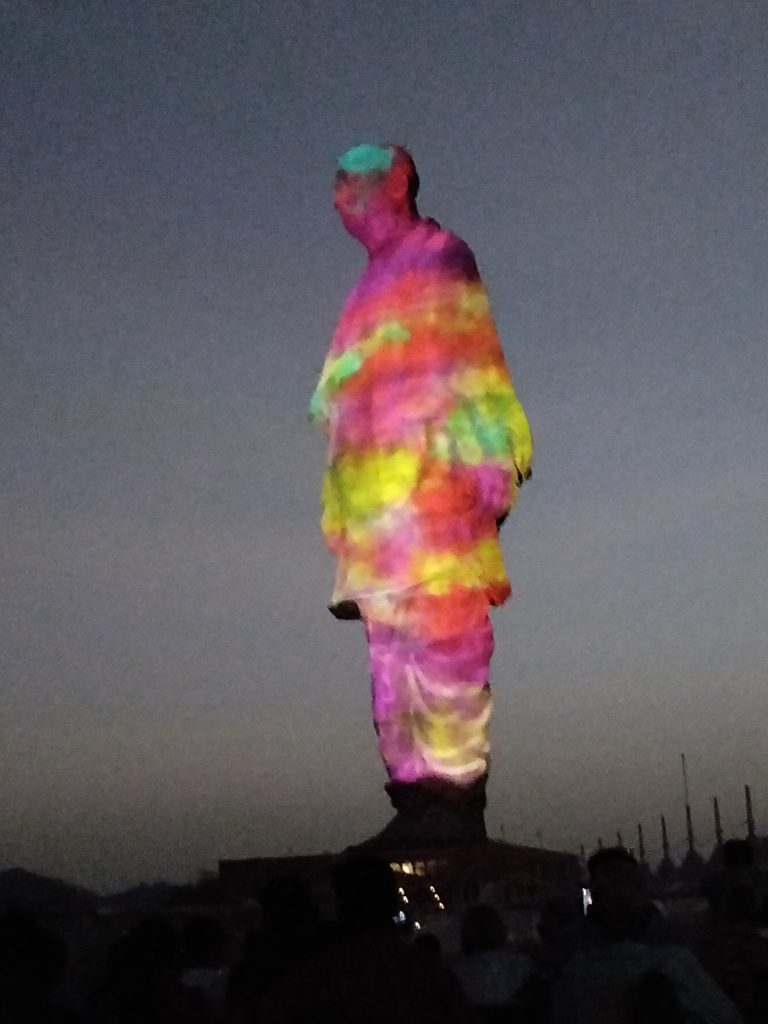
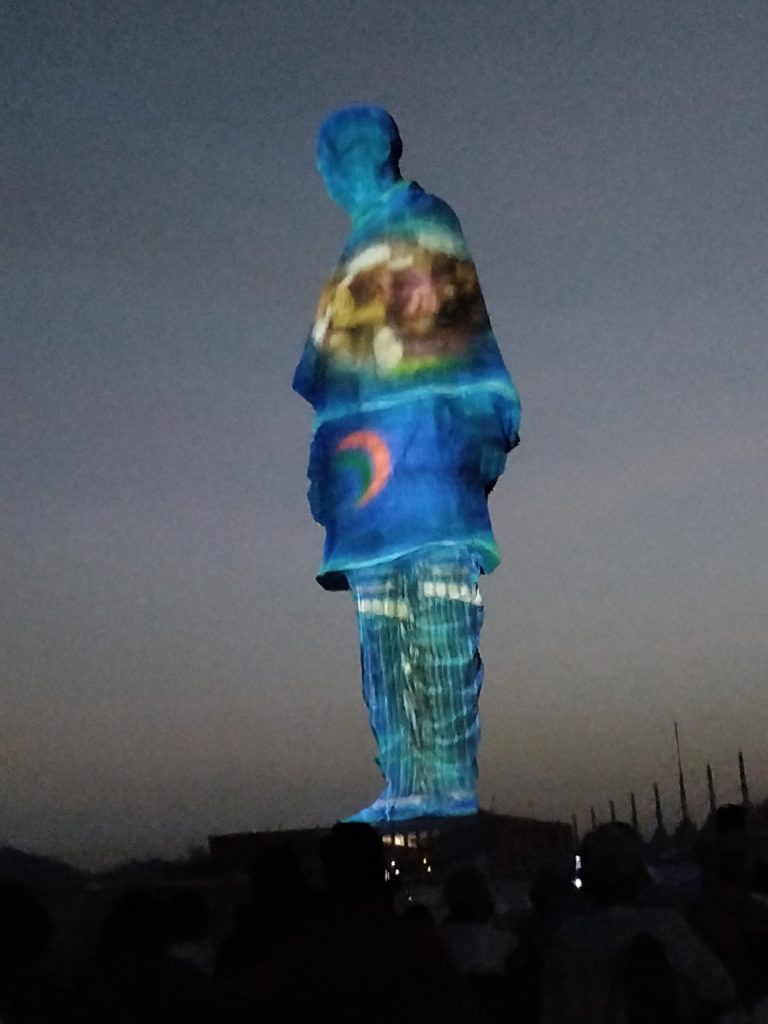
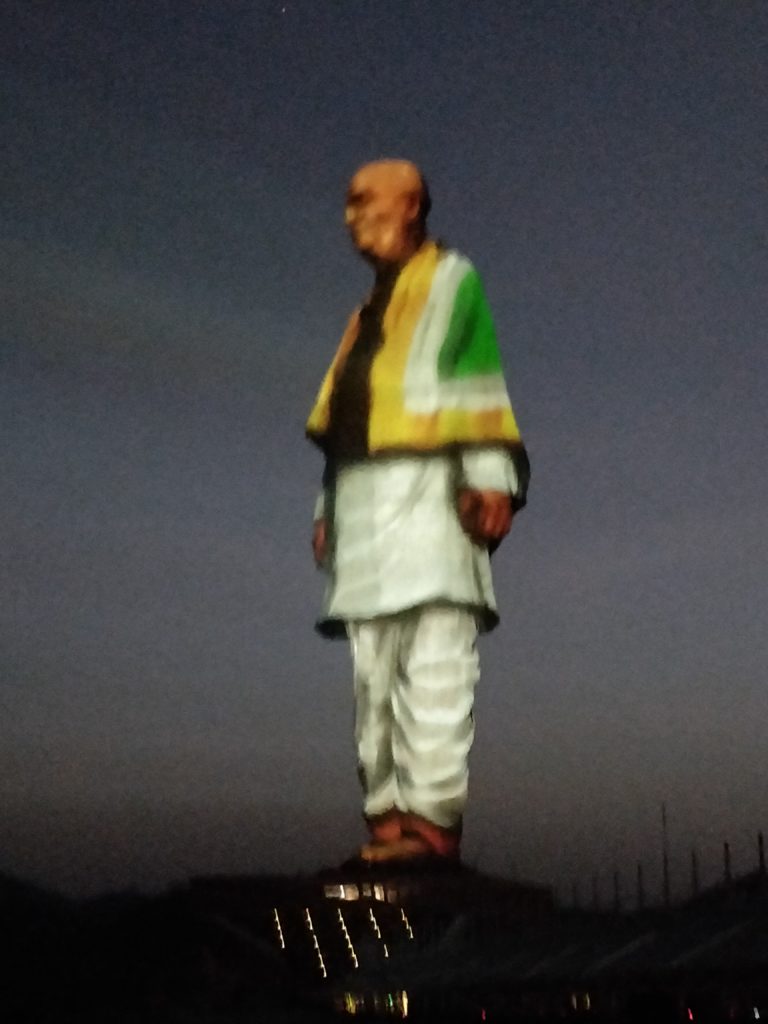
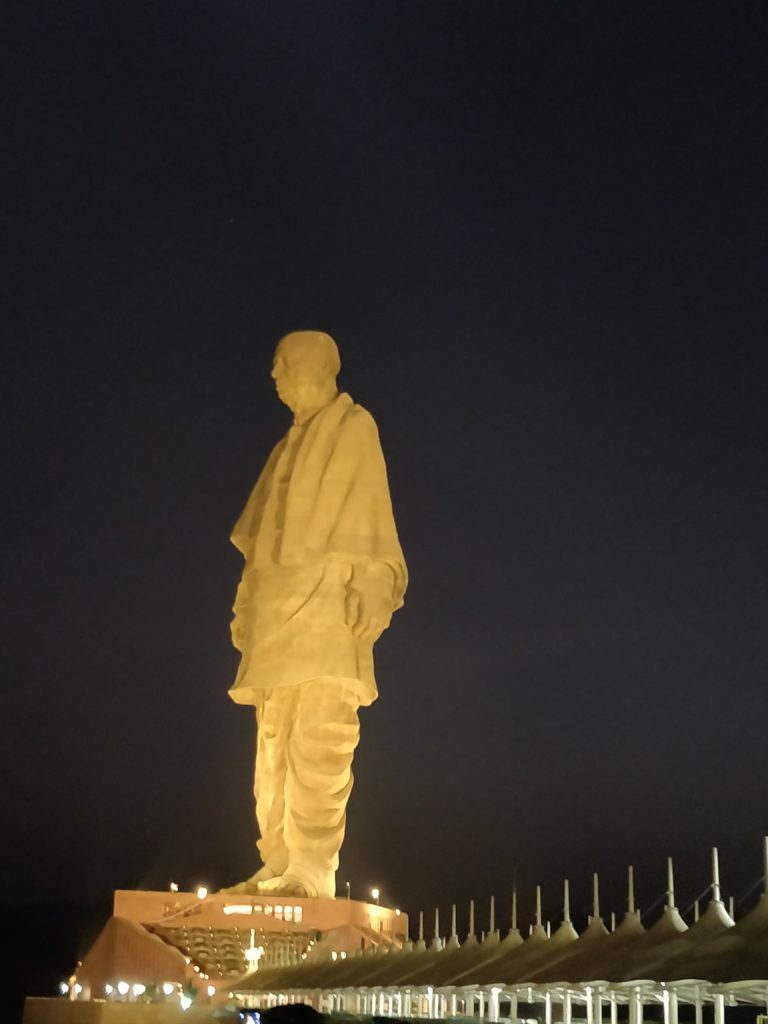
SOU Project Highlights
Through this project, the government intends to promote inclusive and equitable socio-economic growth in the region with tourism development as the key tool.
This involves the development of multiple tourist attractions in the region. Creation of infrastructure for the promotion of education, research, health, and rural and tribal development.
Salient Features of the Project
- It is the first crowd-funded monument, built on a Public Private Partnership (PPP) model. In the PPP model, the fundraising is from both private and public contributions.
- A model for the statue was built by sculptor Ram V Sutar who is a Padma Bhushan recipient. The expression, posture, and pose justify the dignity, confidence, iron will as well as kindness that his persona exudes. It appears as if he is set for a walk. Head up, shawl flung from the shoulders, and hands on the side.
- Michael Graves Architecture & Design is the design partner in a consortium of Turner India, which provided project management and construction management services, and Meinhardt India, a structural engineer. The consortium conceived the project. Engineering-Procurement-Construction contractor, Larsen & Toubro, along with its team of Woods Bagot Architects, and ARUP Engineers executed the project.
- This statue is designed to withstand wind velocities up to 50 m/s.
- The site is located in seismic zone 3. Therefore the statue is also designed to withstand vibration and earthquakes. It can handle a magnitude of 6.5 on the Ritcher Scale.
- A 320-meter-long designer bridge connects Sadhu Hill to the mainland.
- 18,500 metric tonnes of reinforced steel and 6,500 metric tonnes of structural steel, 1,700 metric tonnes of bronze, 210,000 cubic meters of cement concrete.
- The statue has over 6500 bronze panels. They were sourced from China. At the site, the panels were welded. These panels cost around 8% of the cost of the statue.
- An army of over 3,000 workers and the Project Cost is about Rupees 3000 crores.
- It took about 5 years from conceptualization to completion. The project execution duration was about 42 months.
- Learn more about the project from a project management perspective
- Watch the video below for more information.
Sardar Vallabhai Patel Birth Anniversary – National Unity Day
Sardar Vallabhbhai Patel is one of the Architects of Modern India. He was the 1st “Deputy Prime Minister” and “Home Minister” of Independent India. “Sardar” comes from Hindi, Urdu, and Persian languages, which means Chief. He is known for his unrelenting commitment and leadership during the Bardoli Satyagraha. The title of “Sardar” is a recognition of his exemplary leadership skills. What values did the Sardar stand for?
31st October is the birth anniversary of Sardar Patel. In 2014, Indian Prime Minister Narendra Modi declared it Rashtriya Ekta Diwas (National Unity Day). The official statement for Rashtriya Ekta Diwas by the Home Ministry of India cites that the National Unity Day “will provide an opportunity to reaffirm the inherent strength and resilience of our nation to withstand the actual and potential threats to the unity, integrity, and security of our country.
Sardar Vallabhai Patel epitomizes the values of Indian Culture. An ancient culture with a great heritage promoting unity and happiness of mankind. It is the land of festivals and celebrations of the spirit of life. Checkout out our travel diaries on our 3-day visit to the Statue of Unity in March 2023.
